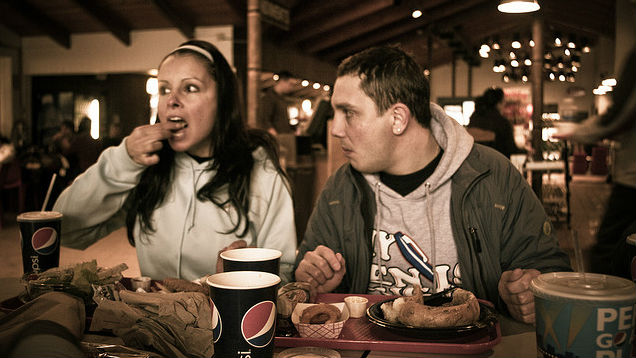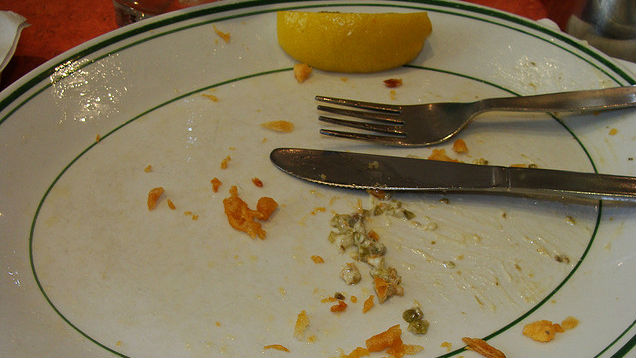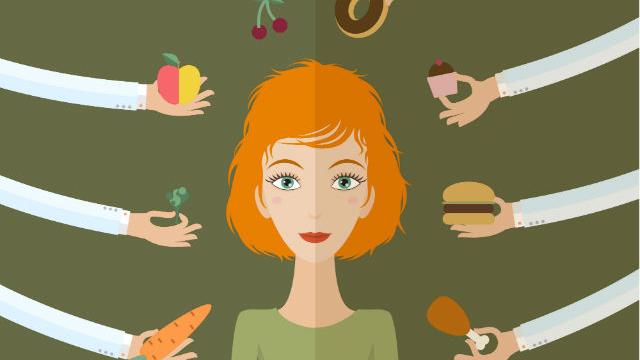“Low kilojoule” foods are all the rage these days. Sure, they may seem like a good idea on the surface, but sometimes they’re as silly as thinking “if I cut this cake in half, I can eat twice the amount.” Here’s how to tell when the lower-kilojoule option is the right decision.
Images by Aniwhite, Geoff LMV, Ben Sutherland, and Bruce Stockwell.
First, realise that food marketers don’t always have your best interest in mind. Creating a “lower kilojoule” alternative is more about sales than the consumer’s health. When you’re counting kilojoules, there’s something even more important than a food’s absolute number — something I call the kilojoule-satiety ratio.
A Primer on the Kilojoule-Satiety Ratio

You’ve probably seen “low kilojoule” pack versions of popular foods. Sure they’re fewer in kilojoules, but they don’t necessarily increase your “satiety” (or fullness). In fact, eat one of those packs and tell me that you’re not actually hungrier afterwards. On the contrary, an 228 gram chicken breast is more than twice the amount of kilojoules, yet you may feel full even before you finish.
When you’re on a diet, think of kilojoules like a budget, where your goal is to maximise fullness at the end of the day. You should go with the lower kilojoule option only if it maximizes your satiety or “fullness.” Sure, foods like olive oil may contain a lot of kilojoules pound-for-pound but greatly increase your satiety, thereby causing you to eat less overall kilojoules.
Satiety isn’t just physical, however; there is a mental component as well. After all, you can’t be “satiated” if you feel like you’re constantly deprived by your food selection.
Mental Satiety vs. Physical Satiety

Even if you’re not physically hungry, you may still have certain cravings. For example, you may be craving something sweet to eat, even if you’re already full. In this case, sugar-free jelly might be a great option, because you’ll be fulfilling your desire for something sweet while saving hundreds of kilojoules.
This is a case where the lower kilojoule option is a good choice. In fact, if you drink four or more full-kilojoule soft drinks per day in order to calm your sweet tooth, you can lose almost half a kilogram every single week with no other change in your diet simply by satisfying your cravings through a kilojoule-free option.
This may also be a case where the low kilojoule option might actually be helpful. For example, let’s say you’re craving a small taste “taste” of Oreos more than anything else. If a low kilojoule pack of Oreos creates this mental satiety, then it too can be a smart decision. Everything depends on context.
Be forewarned. Sometimes a decision like this can actually decrease overall satiety. For example, perhaps eating the low kilojoule pack of Oreos increases your appetite because you feel “unfulfilled” afterwards, or it acts like an appetiser and flips a switch in your brain where you start craving more things. It’s important to be mindful and understand the contexts where eating a lower-kilojoule option seems beneficial.
Where to Go From Here

Understanding that a food’s kilojoule total isn’t necessarily the most important factor when making decisions, here’s some things to keep in mind when deciding how to spend your kilojoule budget:
- More important than kilojoules is the macronutrient ratio of your meals. There’s research to suggest that raising protein and lowering carbohydrates will make you more satiated on a diet. While everyone on a diet will benefit from higher protein, you’ll probably want to play around with these ratios a bit.
- There’s an adage called “never trust the salesman,” and nowhere is it more applicable than in the food industry. Always keep this adage in mind when making decisions based on food labels. People who create lower-kilojoule versions are marketers, not nutritionists. Their primary goal is for you to buy their product — not help you lose weight.
- Never label food as “good or bad” and instead, think about food with the concept of ROI in mind. There’s a context where the lower-kilojoule option can be good, but that’s dependent on the person, situation, environment, craving, and a myriad of other factors. The only way that you can know for sure is by learning about yourself and practicing mindfulness.
That last point is especially important. Many reading this article will intuitively throw their hands up in the air and say “zomg diet soft drink and Oreos are super unhealthy and you just shouldn’t eat them.” But this is a recipe for diet failure. Instead, keep your decision making and food choices flexible through “flexible dieting.” From Evidence Magazine’s article on flexible dieting:
Lyle McDonald was probably the first person to popularise the concept of flexible dieting. McDonald lays out what he believes are the two main reasons dieters fail:
- Being too absolute and expecting perfection.
- Focusing only on the short-term.
Flexible dieting is basically the opposite — not being as absolute and focusing on the long-term as well as the short-term.
By using the decision-making guidelines above, you’ll know exactly when to make the wise decision of going with a lower-kilojoule option, or mindfully indulge with a full-kilojoule treat instead.

Comments
One response to “When Low Kilojoule Foods Actually Screw Your Diet”
I find fasting work well – I can go a whole day without eating anything, however as soon as I have a bite of something, it’s over for the rest of the day! Once you board the train, there’s no getting off.
There also isn’t the problem of feeling unsatiated, which you get from low-calorie diets, since you’re never eating ‘not-quite-enough’